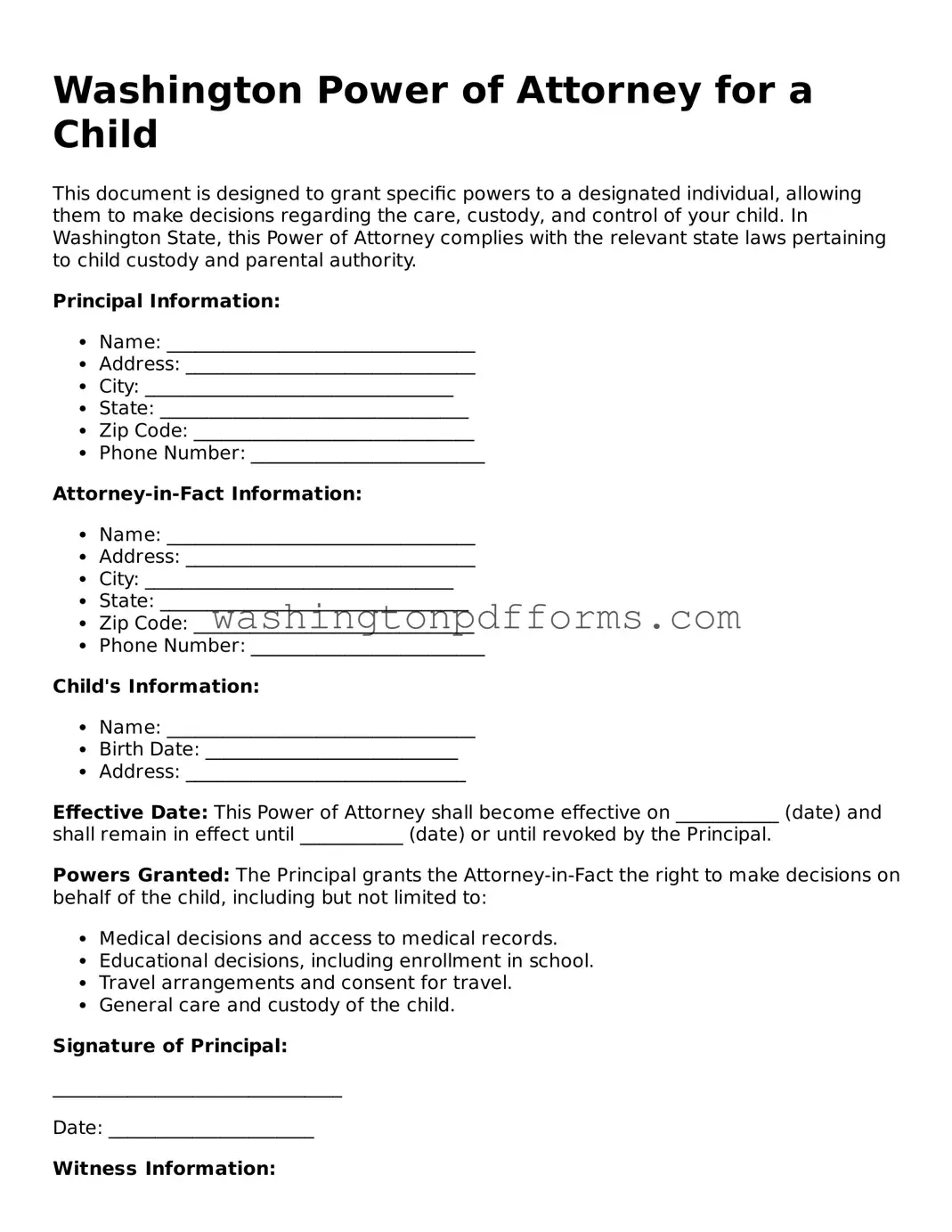Attorney-Approved Washington Power of Attorney for a Child Template
The Washington Power of Attorney for a Child form is a legal document that allows a parent or guardian to designate another adult to make decisions on behalf of their child. This arrangement can be crucial in situations where the parent is unable to care for the child temporarily. Understanding how this form works can provide peace of mind and ensure that your child's needs are met in your absence.
Make My Power of Attorney for a Child Online
